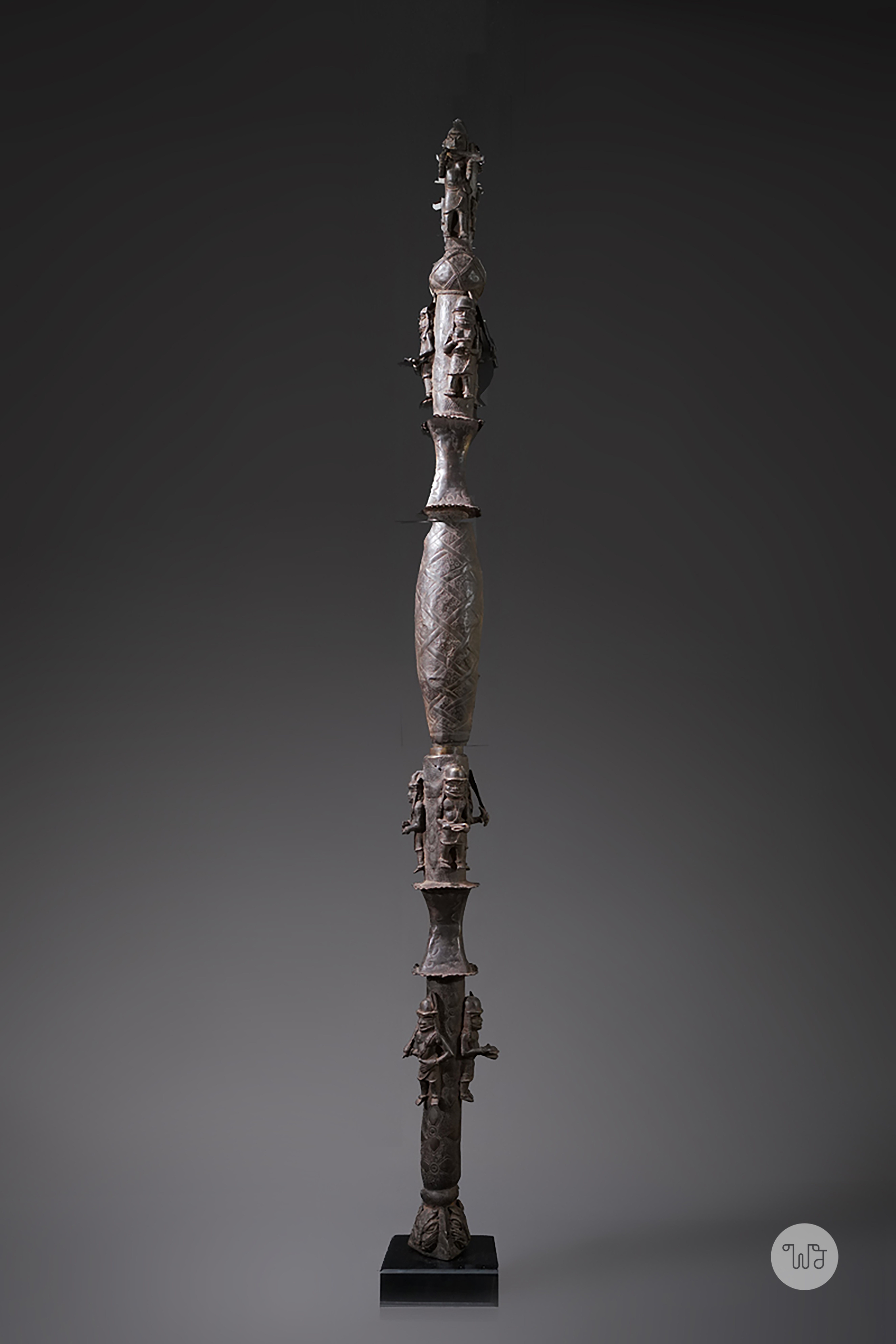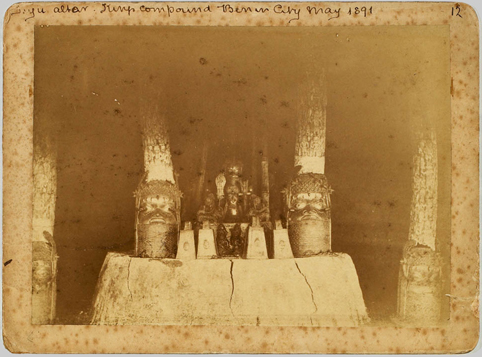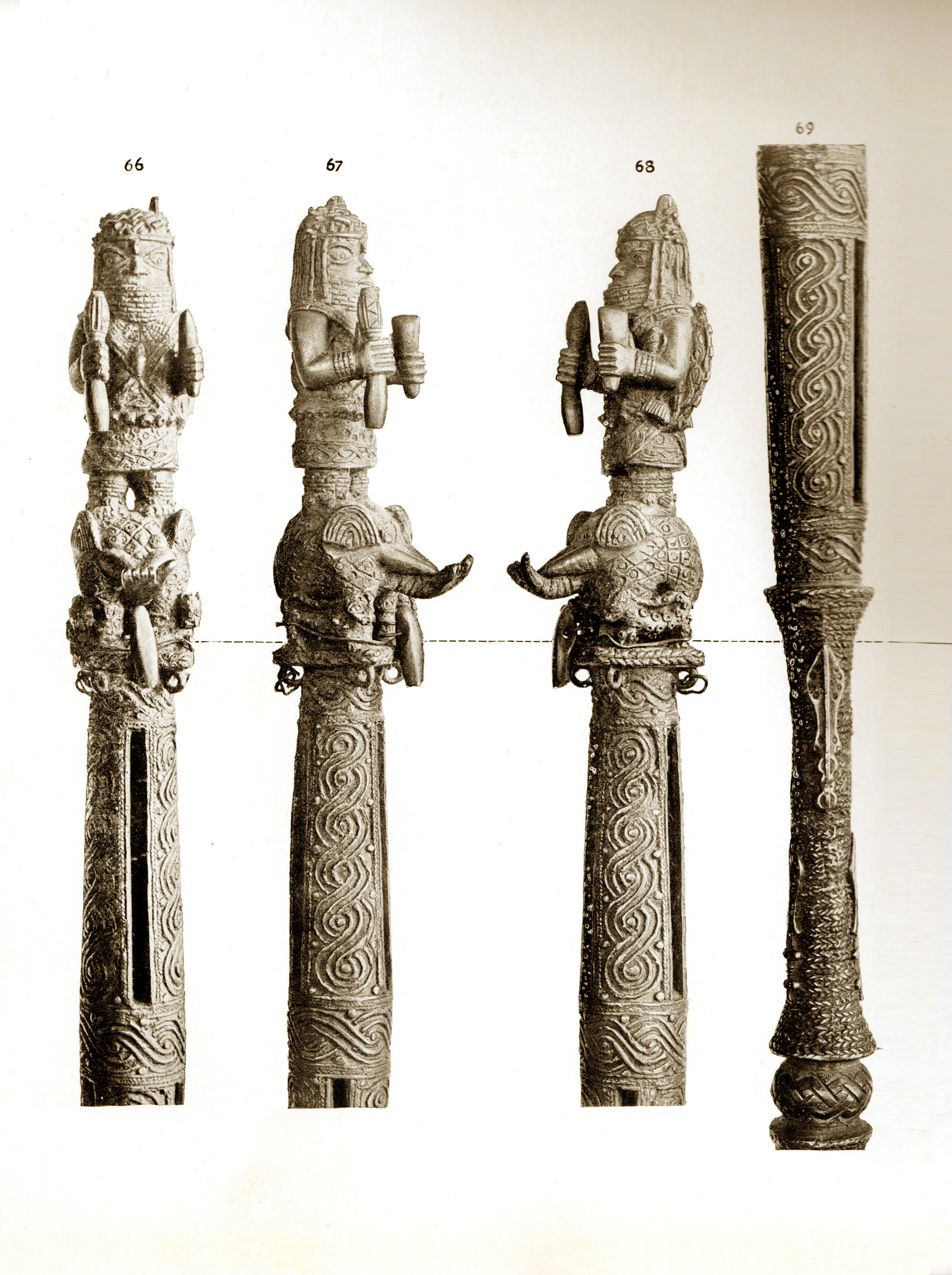|
A bronze rattle-staff in the style of Benin, in two parted segments, indicated by the similarity of the bronze staff Kate Ezra mentioned (photo) These staffs are from the Benin culture. they represent authority that is passed down in families, villages, priests or successors in general.They would be used as parts of ancestral altars to commemorate current and past leaders. These were carved from wood for everyone except the Oba’s who would have them casted from brass and sometimes from ivory.
On the top of the staffs there would be a slit that would house a wood or clay cylindrical rattle. This rattle was used to call attention to spirits so that they would come to their altar and make themselves present. These staffs were lined up by the altar where they symbolized the community and the continuity from generations of being passed down. On the Oba’s staff there are often figures or mudfish represented. It’s also said that the spirits from past Oba’s are housed within the staff and continue to be passed on. Height: 166 cm incl. stand 174 cm Weight: 12,8 kg
|
 photo: wolfgang-jaenicke.com, for more information, please write us an e-mail with the identification number of the photo identification no. WMJ02881.jpg |
"..this (rattle staff) was found by an officer of the expedition (1897) in the state department of the palaver house, and was evidengtely left behind by the king´s people on account of its heavy weight, in their hurried exodus from Benin City; the king is said to have since recognized this staff, and stated that it had been handed down for many hundreds of years from king to king. it has the representation of "Overami" or reigning monarch, on the summit, dressed in the usuak manner of Benin warriors..The interior of the upper part of the mace is hollow, having a piece of metal inside, formed like along crotal, and was used as a bell to keep order. " source: Pitt Rivers Collection 1900, Antique works of Art from Benin, pages 22, Plate XI. |

